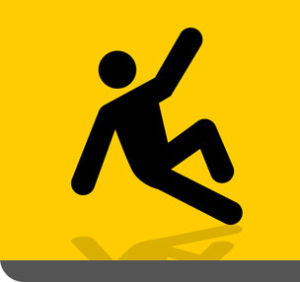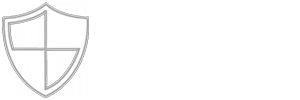Useful Resources
Direct Deposit
To begin, change or cancel the transmittal of workers’ compensation benefit checks and/or proceeds from a settlement agreement pursuant to WCL § 32 (hereinafter settlement proceeds) directly to a financial institution, please fill out this form with a wet ink signature and mail directly to SAFE’s office. Do not send to the Workers’ Compensation Board.
ATTN: Accounting
SAFE LLC
2556 Hambletonian Way
Camillus, New York 13031.
Medical Billing - FAQs
-
- For faster bill processing, submit bills through Carisk at www.cariskic.com using payer ID: SAFE01
- When inquiring about bill status, provide the WCB #, date of service, billed amount, and claimant’s name
- If you submitted a bill within the last 45 days, wait until the 30-day window has passed before following up
For out-of-state medical bills or hospital/EAPG bills, contact Optum Customer Service at 800-683-1254 or billinginquiries@conduent.com
For reconsideration of denied or reduced payments, send to SAFE LLC at 2556 Hambletonian Way, Camillus, NY 13031, including:
- A narrative explanation of why each item should be paid
- A copy of the Review Analysis
- Supporting documentation
If denial of reconsideration is upheld, direct further questions to Optum Customer Service at 800-683-1254 or billinginquiries@conduent.com
Please note: starting August 1, 2025, the NYS Workers’ Compensation Board will require health care providers to submit the CMS-1500 form electronically through an approved partner.
Safety Resources
Safety Checklist
Code Rule 60 Safety Checklist (click here to download)
Return To Work Checklist
Code Rule 60 Return To Work (click here to download)
Useful Articles & Documents
Code Rule 59
The SAFE approach to Code Rule 59 Compliance
SAFE LLC’s Code Rule 59 Consulting Program is available to New York businesses statewide. You’ll be provided with an experienced workplace safety professional that will assist you in meeting the mandated requirements. Our experience in evaluating and building Workplace Safety Programs for employers of all sizes will not only help you meet regulations but also help you to successfully implement any necessary resolutions.
If your company has a payroll of over $800k and your Workers’ Compensation experience modifier rating is higher than 1.20 your next 3 steps are:
STEP ONE
Schedule a consultation by a certified Safety and Loss consultant within 30 days.
STEP TWO
Notify your insurer and the Department of Labor of the name, address and certification number of your consultant within 10 days of setting up the consultation.
STEP THREE
Provide a written report from your consultation within 75 days of receiving your initial notice.
Answer 5 Questions to Reach out
to our Senior Accident Prevent Consultant
to Discuss Your Questions!
Code Rule 60
Code Rule 60 Safety Checklist (click here to download)
Code Rule 60 Return To Work (click here to download)
Top Tips for Improving Safety Training

By: Ashok Sharma
Everyone knows safety training is important. Everyone also knows that there are other things they’d rather be doing. Safety training takes workers off of the job site and that can be costly, as well as a distraction, affecting information retention and reducing the effectiveness of your training sessions.
The remedy isn’t longer sessions or more thorough testing. The solution is more effective use of class time. By placing an emphasis on engagement and changing simple things about the way instructors present training information, you can help employees focus on the importance of safety training and the work in front of them while realizing that safety doesn’t end with training sessions.
Whether you use training management software, classroom learning or a combination of both, engagement plays a key role in information retention for your employees. Increased retention means the lessons paid for in the classroom can help your employees cut loses and reduce injuries on the job site increasing your organization’s return on investment.
The first step in training engagement begins before class starts. In order to engage employees and give them confidence, instructors need to view training as a dialogue built around a safety-oriented corporate culture. Have management set an example for employees and show them that goals, like having zero incidents are worth striving for. This way management can set and test limits on performance while showing employees that there’s no excuse not to meet safety standards. It is always more effective for management to show this with their actions instead of just words.
Setting an example for employees is just the first step in creating a culture of safety around your organization. Invest the time and money into developing training tools and programs that will speed up the transmission of information and learning. Personal safety equipment is a valuable tool for employee protection and almost always presents a positive return on investment; the same can be said of safety training. In many cases, an employee learning management system can be the perfect tool to support your message delivery. By investing in a variety of training materials, like video and interactive exercises, employees will see the value you are placing in their training and will give lessons more attention according to that perceived value.
Slides, interactive exercises and animated videos may be more expensive to develop than text-based training methods, but they also increase learning retention and keep classroom sessions fresh by segmenting information and helping time pass more quickly. Using a number of different training methods will accommodate a variety of learning styles in your workforce and help ensure that everyone clearly understands the lessons being presented. Taking breaks is important, as well, to compartmentalize training session information. This improves retention and employees’ willingness to interact.
Another way to increase engagement and provide variety to classroom sessions is to bring in expert speakers. Many are affordable and provide industry insight not readily available to safety training staff. Benefit from an expert’s experience by playing out emergency situations and recounting personal stories. These exercises will help employees contextualize information and increase retention.
The most important part of safety training invariably ends up being how information is reinforced once classroom and e-learning sessions are over. Create regular safety meetings that showcase good work. Emphasize hazard identification and provide incentives that will keep workers interested and committed. Make use of evaluations when training is over and at frequent intervals to reinforce important topics. It’s all about embracing a safety culture that will reduce workplace incidents and keep your employees’ heads in the game—and protected.
This safety article was brought to you by: Warriors4Safety.com
Slips, Trips and Falls

While working on a job site, have you ever walked by debris that could cause a slip, a trip or a fall and ignored the debris thinking that someone else would pick it up? Job site cleanup is important to prevent slips, trips or falls, yet it is sometimes ignored as if it is unimportant. Let’s discuss some tips that will help prevent slips, trips and falls.
Create Good Housekeeping Practices:
Good housekeeping is critical for a safe workplace. Safety and housekeeping go hand-in-hand. If your job site has poor housekeeping habits, this could result in a higher rate of injuries that can drive up insurance costs, and produce citations. If proper housekeeping is maintained, it would suggest that the overall safety program is effective.
Reduce Wet Or Slippery Surfaces:
Walking and working surfaces can account for many accidents/injuries. Some of the most frequently types of surfaces where these injuries occur are:
- Sidewalks or lack of sidewalks
- Rocky terrain
- Floors in general
Avoid Creating Obstacles in Aisles and Walkways:
Injuries can result from trips caused by clutter, materials and equipment in aisles, corridors, entrance ways and stairwells. Proper housekeeping in work and traffic areas is still the most effective way to prevent these hazards. Having policies and procedures in place is pro-active.
- Keep all work areas, passageways and storerooms clean and orderly
- Avoid stringing power cords, cables or air hoses across walking areas
- Conduct periodic inspections for slips, and trip hazards
Create and Maintain Proper Lighting:
Poor lighting in the workplace is associated with increase in injuries.
Use proper lighting in areas that are dark and hard to see.
Keep areas around light switches clear and accessible.
Repair fixtures, switches and cords immediately if they malfunction.
Wear Proper Footwear:
The footwear we wear can play a big part in preventing falls. Soles that are slick will not give you proper traction needed to prevent a slip which can result in a fall. Shoelaces need to be the proper length for the type of footwear you wear and need to be properly tied. Wear appropriate footwear for the task you are doing.
Control Individual Behavior:
Individual behavior is tough to control. Human nature allows us to become complacent and let our guard down, if only for a minute, thus the possibly of having an accident. Being constantly aware of the task we are performing and aware of our surroundings will help alleviate accidents.
This safety article was brought to you by: Warriors4Safety.com
8 Strategies to Curb Compensation Costs

Here are eight strategies for curbing workers’ compensation costs. While this is not an all exclusive list, it highlights practical steps to review and revisit at regular intervals.
Introduction of Safe Work Place Philosophy and Culture .
Let employees know upfront that you want them to stay safe and productive throughout their employment by providing continued education on safety.
Be Proactive instead of Reactive.
As you and your supervisors embrace the key elements of a SAFE program you will develop your “safety sense” and be able to prevent injuries before they occur.
Investigate each incident/accident completely and timely.
Even when it appears that it may be inconsequential, responding quickly and documenting when the details are fresh will allow the root cause to be determined. Also, be sure to follow through with the corrective measures discovered during the investigation.
Transitional Work Duties for those that are injured on the job.
Have injured employees return to work in a transitional capacity that is both productive and meaningful. Be creative! There are more tasks that can be done temporarily than you may realize.
Contact injured employees weekly
This should be conducted by the employee’s supervisor, HR Director or Administrator. Your employee is an investment you want to protect-weekly contact will help with this. Be sure to include how the employee is feeling, in addition to progress reports from their physician, and/or therapist.
Implement other SAFE Prevention Programs.
Injury Free Transfer program, Supervisor Accountability Program, Managing Resident Behavior Program, Slip & Fall Prevention Program.
Use “fresh eyes” when reviewing your facility.
Be sure to consistently schedule safety audits and rotate the staff with the areas to be audited. Also, sometimes issues can present themselves when workspaces are configured or traffic patterns are modified.
It Pays to Hire Smart
Conduct pre-employment physicals with a review of any relevant past medical history and a post offer lift test to evaluate the candidate’s abilities to perform job functions.
These tools will ensure that you hire the right person for the right job!
